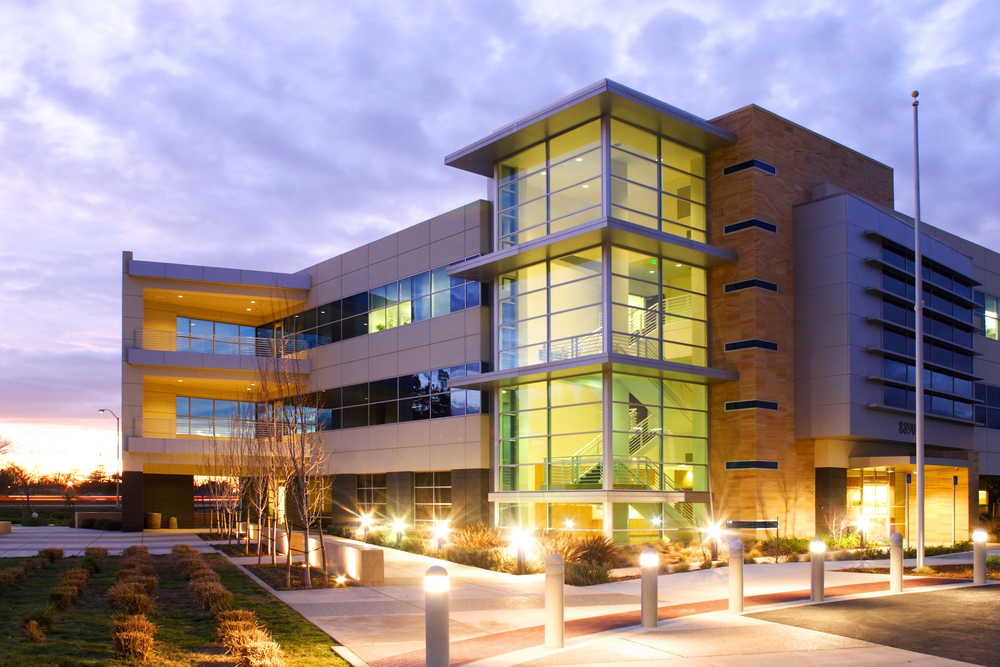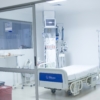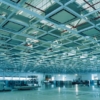Pressurization In Commercial Buildings
Why Pressurization Matters in Commercial Buildings
Untreated outdoor air leaks into — infiltrates — a building when indoor pressure is less than the pressure outside. Control strategies typically strive to limit or eliminate infiltration as a means of minimizing HVAC loads and related operating costs. Infiltration isn’t always bad, however. During the heating season, for example, a small amount of dry outdoor air leaking into the building envelope discourages moisture from condensing there.
But excessively negative pressure causes problems. Uncomfortable drafts and stratification interfere with temperature control and may encourage odor migration. Outward- swinging doors become difficult to open, and inward-swinging doors fail to reclose, compromising security in addition to efforts to keep heating and cooling cost down.
Any amount of infiltration during the cooling season can raise the dew point within the building envelope, which increases the likelihood of microbial growth and structural deterioration. Infiltration of warm, moist air also affects occupied spaces by increasing the possibility of mold.
Conditioned indoor air leaks out of — exfiltrates from — the building when the pressure inside is greater than the pressure outside.
During the summer, exfiltration of cool, dehumidified indoor air benefits the building by keeping the envelope dry. But excessively positive pressure makes opening and closing doors difficult and creates noisy high-velocity airflow around doors and windows. It can also wreak havoc with temperature control by continuously leaking already conditioned air to the outside.
During the winter, even slightly positive pressure inside a building forces moist indoor air outside the building envelope. Moisture may condense on cold surfaces inside walls, hastening structural deterioration. Ideally, the net pressure inside the building relative to outside should range from slightly negative or neutral during cold weather (minimizing exfiltration) to slightly positive during warm weather (minimizing infiltration). Excessive building pressure, whether negative or positive, should be avoided.
Variables that may affect pressure
Preventing extreme building pressures, either positive or negative, is much easier said than done. In most structures, the indoor – outdoor pressure difference results directly from the combined effect of weather, wind, and operation of the mechanical ventilation (HVAC) system.
Exhaust airflow — which may be central or local, constant or variable — carries contaminants from the building. Local codes or industry standards define how much exhaust air must be removed from specific types of spaces (rest rooms, for example), regardless of pressure-related concerns or operating mode.
Weather: Like a column of water in a pipe, the weight of a column of air results in a “head” pressure that increases from the top of the column to the bottom. Described as hydrostatic pressure, more commonly known as “stack pressure,” the weight of the air column is affected by local barometric pressure, temperature, and the humidity ratio.
Temperature-related differences in indoor and outdoor air density create differences in pressure that can affect infiltration, exfiltration, and the direction of air movement within shafts and stairwells.
Relief airflow removes air from the building (again, either centrally or locally) to balance barometric pressure, temperature, and humidity ratio.
When indoor air is warmer than outdoor air, the less dense column of air inside the building results in a net negative pressure below the neutral pressure level (NPL) and a corresponding net positive pressure above it. Because all building envelopes contain unavoidable cracks and openings, this pressure difference allows outdoor air to enter the lower floors and indoor air to leave the upper floors. These leakage characteristics also encourage upward airflow — normal stack effect — within shafts and stairwells.
When indoor air is cooler than outdoor air, the column of air inside the building is more dense. The result is a net negative pressure at the top of the building and a corresponding net positive pressure at the bottom. Unless building pressure is controlled, outdoor air will infiltrate the upper floors while indoor air exfiltrates from the lower levels. The pressure difference also induces downward airflow in stairwells and shafts — reverse stack effect.
Putting it all together
As you can see, it is important to consider variables in addition to air pressure for maintaining correct negative or positive air pressure in commercial facilities. Knowing, controlling and maintaining temperature and humidity can positively or adversely affect pressurization, which has a big impact on heating and cooling costs. An independent monitoring solution that consistently and accurately monitors and alerts according to current room environmental condition is important. Instrumentation should easily display current conditions and alert personnel of changes in desired ranges in respect to temperature, relative humidity and room differential pressure.



